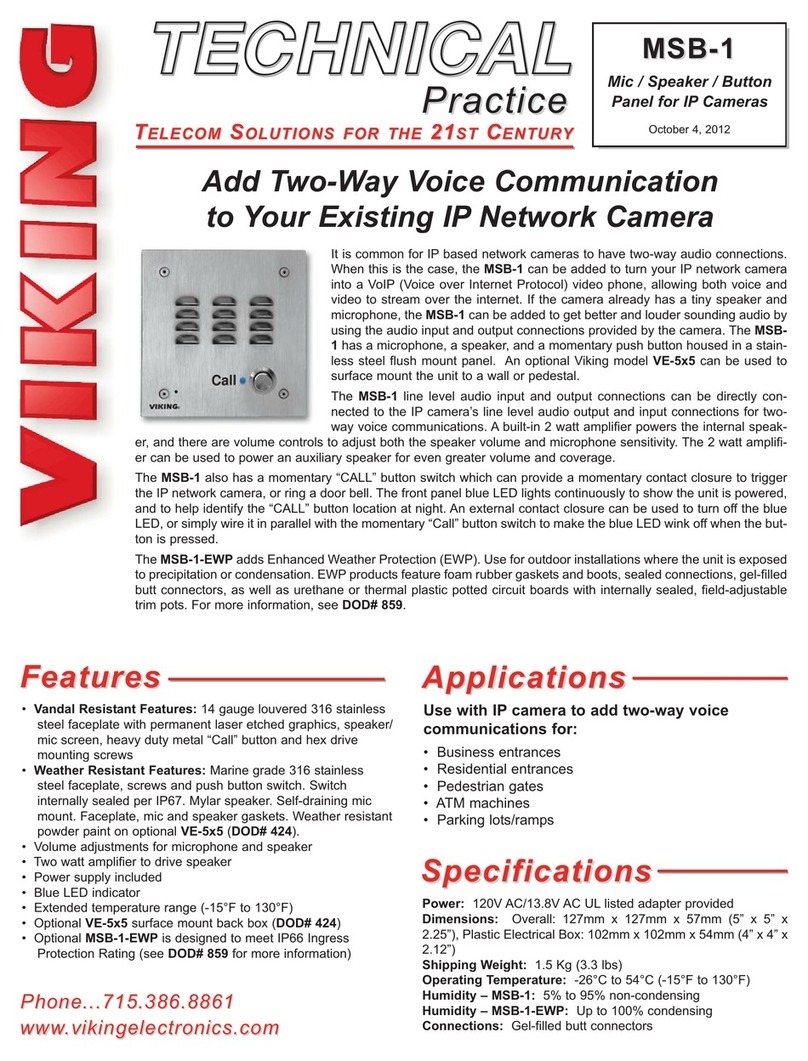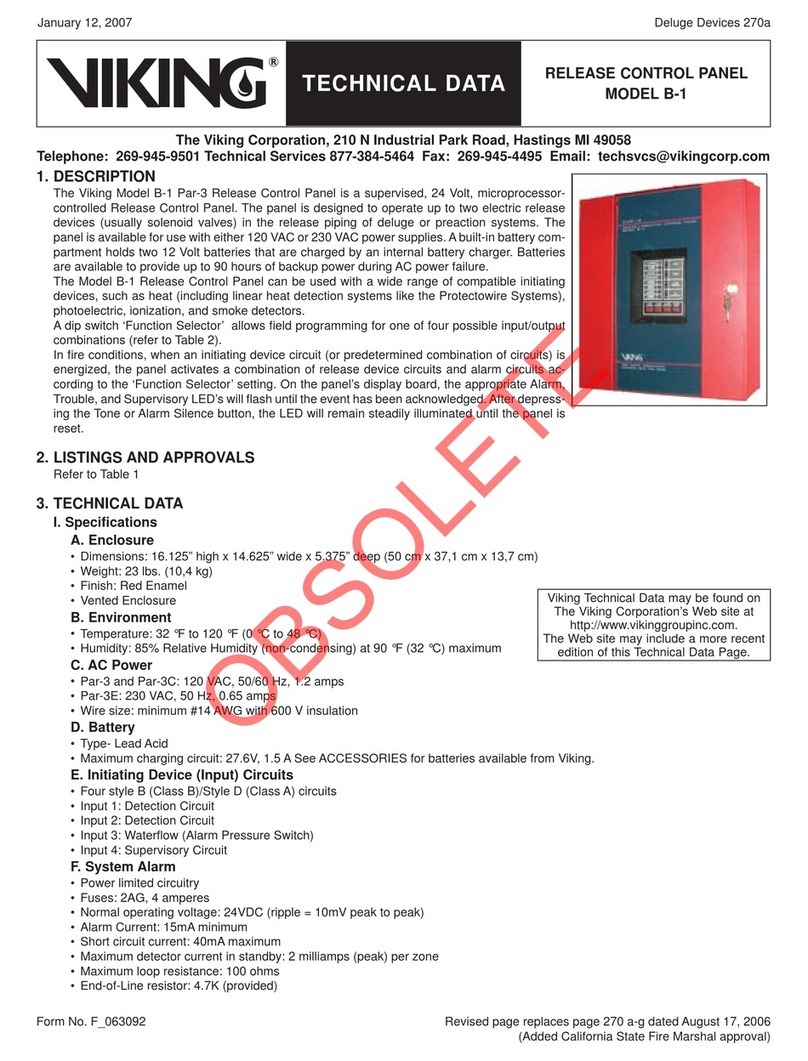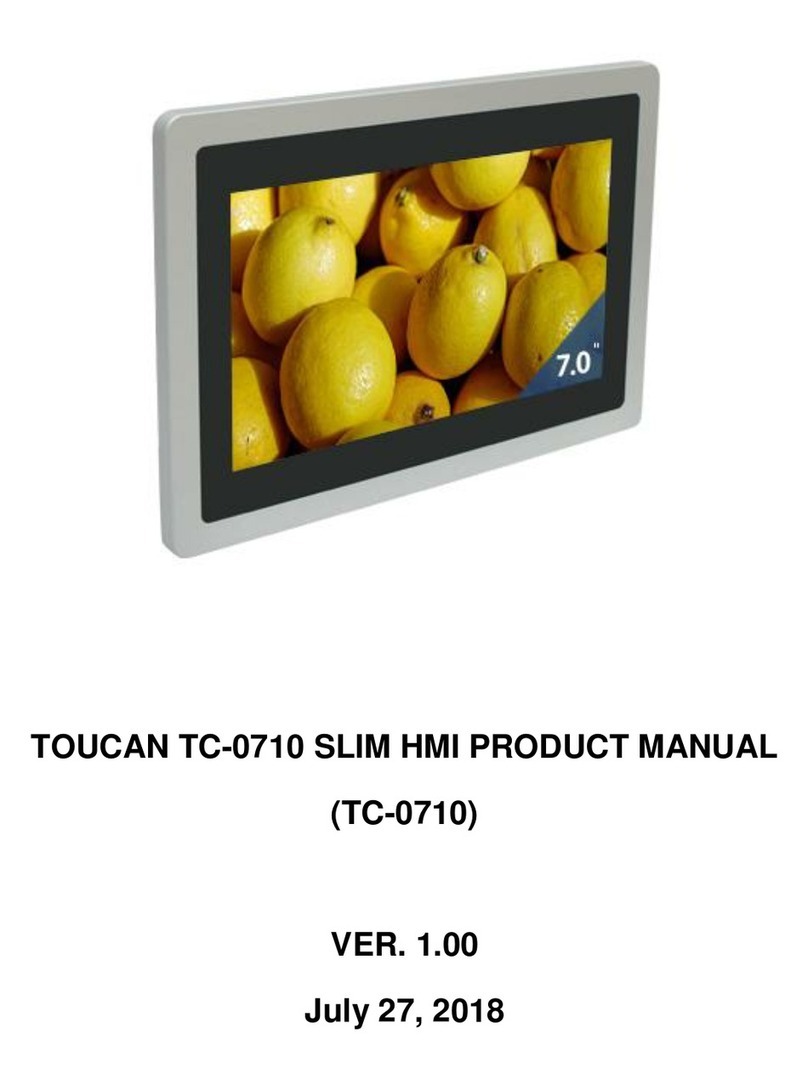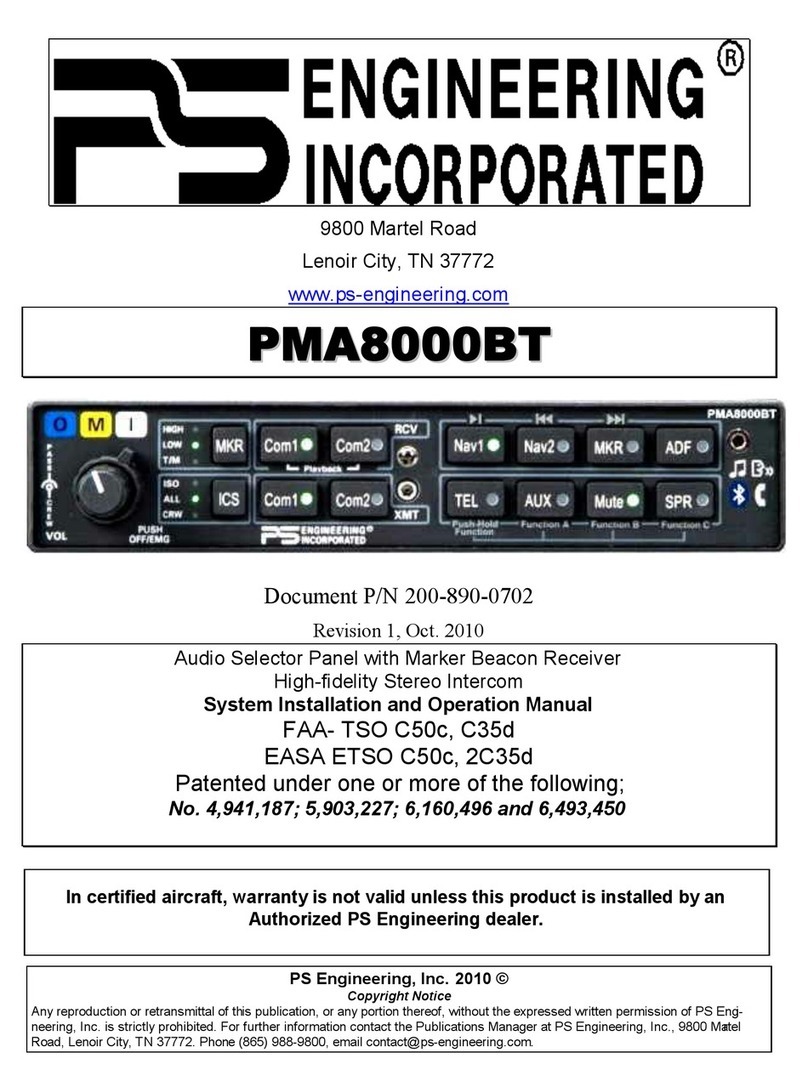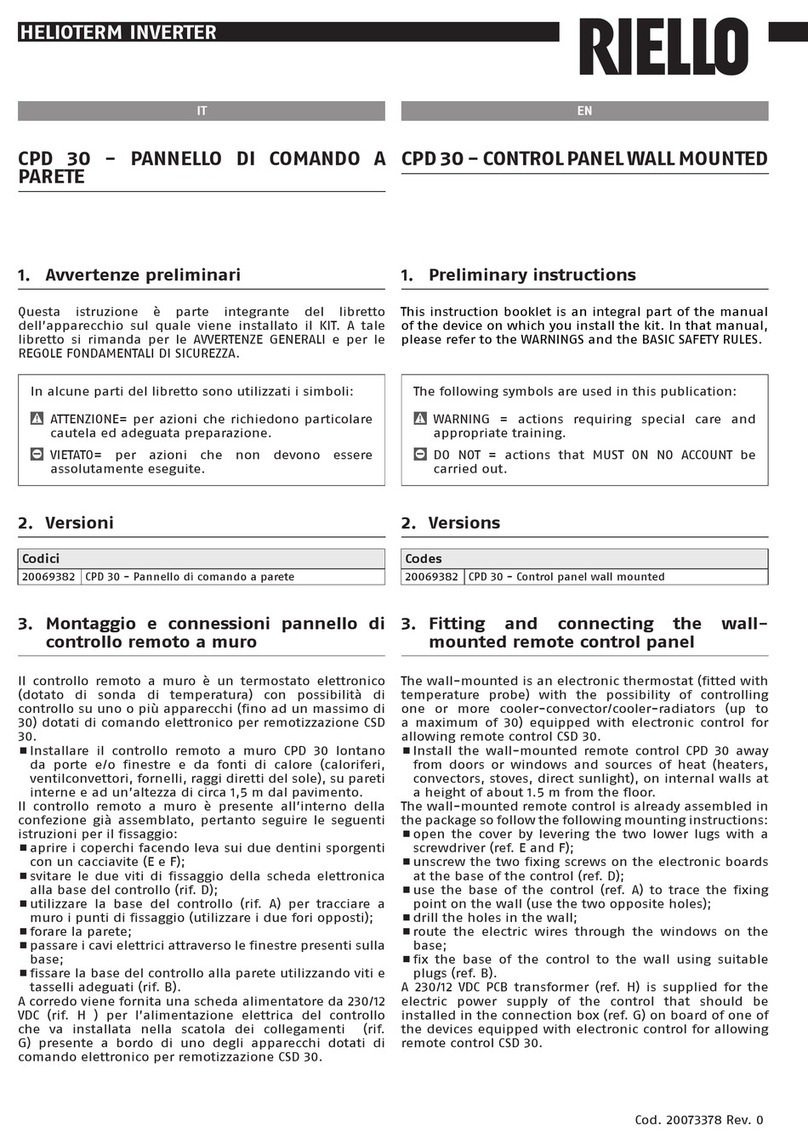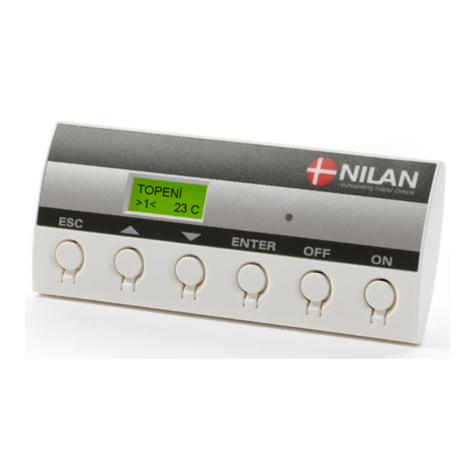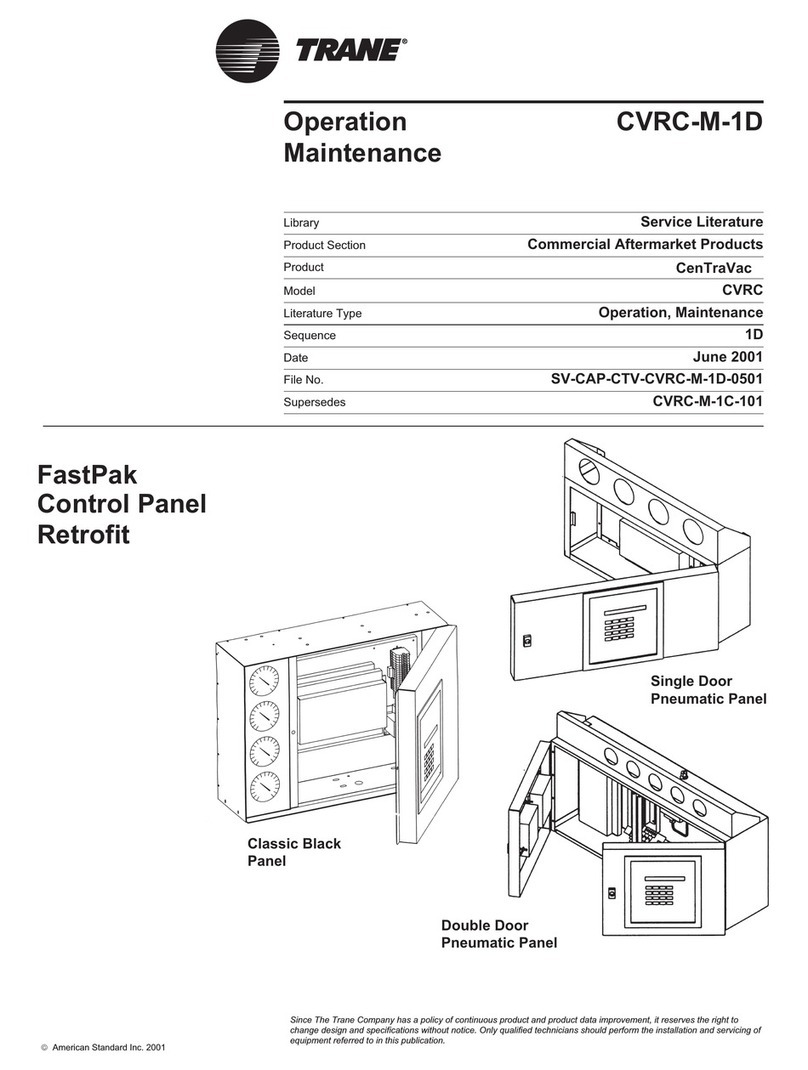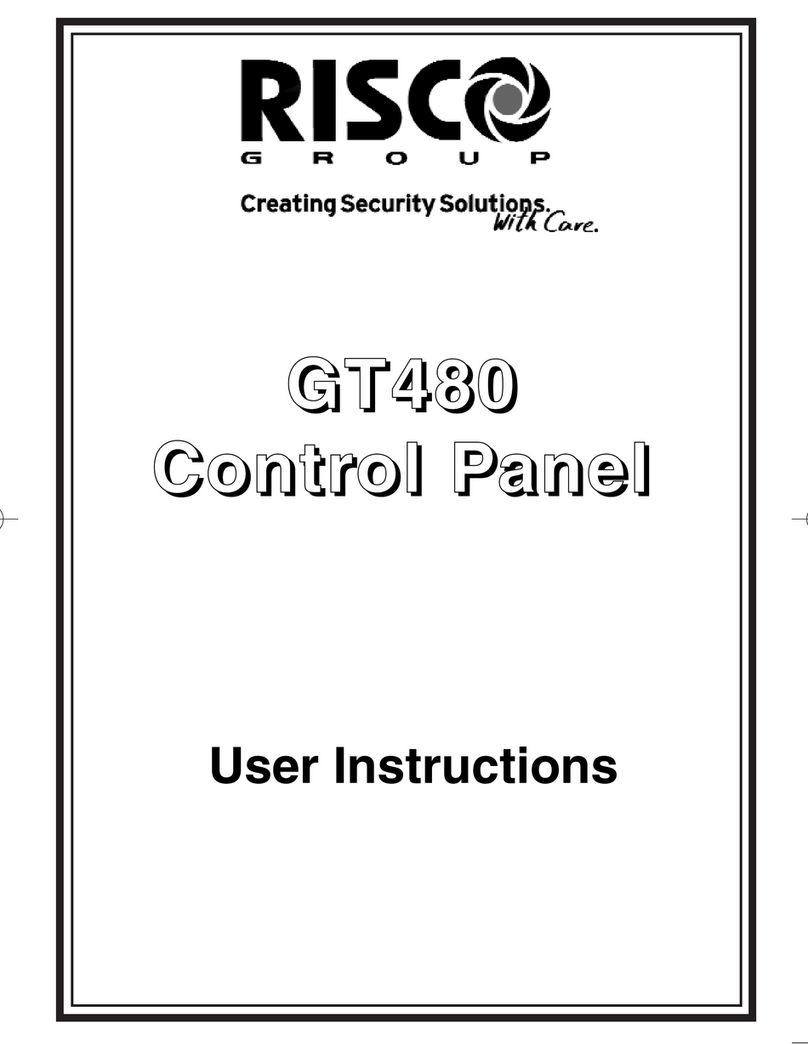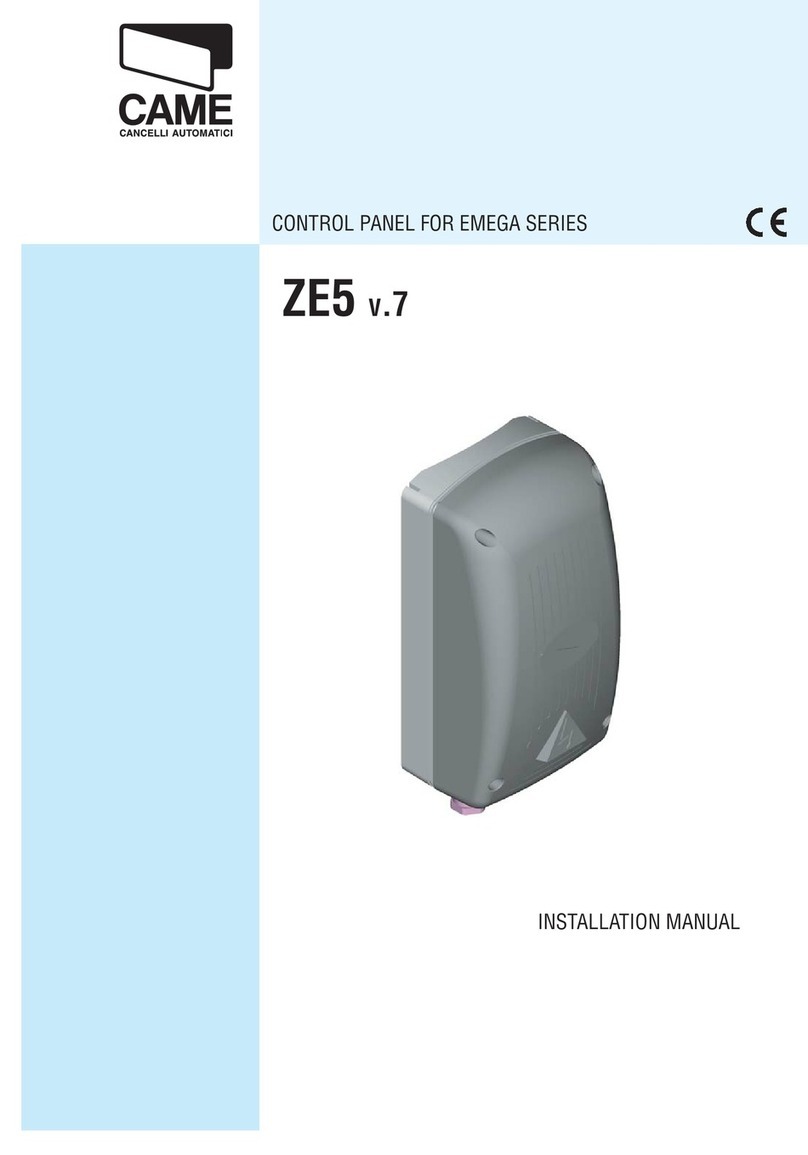Viking VFR400 User manual

Manual #5403548 Rev. W
8/17
VFR-400 Releasing Control Panel
Installation, Operation, and
Instruction Manual
Releasing Panel
for Sprinkler
and Clean Agent
Systems
(All specications subject to revision.)

2
VFR-400 • 5403548 • REV W • 8/17
Table of ConTenTs
Operating Instructions Form.........................................................................................................................................4
Design Guidelines............................................................................................................................................................4
General Description ........................................................................................................................................................5
System Features...............................................................................................................................................................5
Options Refer to Appendix A of the manual for product data sheets..................................................................7
Specications......................................................................................................................................................7
VFR-400 Visual Indicators: Visible with Door Closed ......................................................................................7
LCD ....................................................................................................................................................................8
VFR-400 Visual Indicators ................................................................................................................................8
Control Buttons ..................................................................................................................................................8
Circuit Parameters..........................................................................................................................................................9
Initiating Device Zones ......................................................................................................................................9
Dedicated Supervisory Zones.............................................................................................................................9
Notication/Release Circuits..............................................................................................................................9
Low/Missing Battery ..........................................................................................................................................10
Input Power ........................................................................................................................................................10
Backup Power Requirements .............................................................................................................................10
Service Use.........................................................................................................................................................11
Listings & Approvals..........................................................................................................................................11
Terminals ............................................................................................................................................................11
Relay Outputs .....................................................................................................................................................11
Auxiliary Power..................................................................................................................................................11
Annunciator Connection.....................................................................................................................................11
CA2Z Module (Class A Initiating Device Circuit).............................................................................................11
ARM-44 (Auxiliary Relay Module) ..................................................................................................................... 11
CAM Module (Class A Indicating Appliance Circuit) .......................................................................................11
ARM-1/ARM-2 Module (Auxiliary Relay Module)..........................................................................................11
RA-4410RC (Remote Annunciator) ...................................................................................................................11
RCDS-1 (Release Circuit Disconnect Switch) ...................................................................................................11
Basic Operation...............................................................................................................................................................11
Initiating Device Circuits Alarm Condition .......................................................................................................12
Alarm .................................................................................................................................................................12
Low Air Alarm....................................................................................................................................................12
Supervisory.........................................................................................................................................................12
Trouble Conditions .............................................................................................................................................13
Notication Appliance/Releasing Circuits .........................................................................................................13
Loss Or Reduction Of AC Power .......................................................................................................................13
Notication Appliance/Releasing Circuits .........................................................................................................13
Low Battery Voltage...........................................................................................................................................14
Loss of Auxiliary Power Output.........................................................................................................................14
To Silence the Buzzer or Outputs That Have Been Described As Trouble or Supervisory Bell........................14
To Silence A Signaling Appliance...................................................................................................................................14
To Reset an Alarm or Supervisory Condition.....................................................................................................14
To Reset A Trouble Condition ............................................................................................................................14
Lamp Test ...........................................................................................................................................................14
Remote Annunciator Model RA-4410RC Operation...................................................................................................15
Basic Operation ..................................................................................................................................................15
Installation Instructions .................................................................................................................................................15
Mounting Instructions ........................................................................................................................................16
Wire Checkout.................................................................................................................................................................16
Battery Size Requirements And Maintenance..............................................................................................................17
Inactive Circuits..................................................................................................................................................17
Battery Size Calculations ...............................................................................................................................................17-19
Connection Procedure for Battery Charging Current and Voltage ...........................................................................18
Connection Drawing for Central Station and Remote Station Operation ................................................................18

3
VFR-400 • 5403548 • REV W • 8/17
Wire Routing for VFR-400.............................................................................................................................................20
NEC Section 760-54. Installation of Conductors and Equipment.............................................................................20
Test Procedure ....................................................................................................................................................23
Test Procedure (Canada).....................................................................................................................................23
Programming Mode Instructions ..................................................................................................................................24
Panel Visual Display .......................................................................................................................................................24
History ................................................................................................................................................................24
Date/Time ...........................................................................................................................................................24
Password.............................................................................................................................................................25
Zone Disabled/Enabled ......................................................................................................................................25
Output Enable/Disable........................................................................................................................................26
One Man Walktest ..............................................................................................................................................26
VFR-400 Standard Program Information/Wiring Diagrams.....................................................................................27-78
VFR-400 Custom Program Information/Water Based Extinguishing.......................................................................79-82
VFR-400 Custom Program Information/Water Based Extinguishing.......................................................................83-88
2-Wire Smoke Detector And Synchronization Module Compatibility Data .............................................................89
4-WIRE HEAT DETECTOR COMPATIBILITY IDENTIFIER “A” ......................................................................91
Viking Firecycle normally closed heat detectors..........................................................................................................91
4-Wire Smoke Detectors/Devices ...................................................................................................................................92
Appendix a: Product Datasheets of optional Equipment............................................................................................94

4
VFR-400 • 5403548 • REV W • 8/17
This is the safety alert system. It is used to alert you to potential personal injury hazards. Obey all safety messages
that follow this symbol to avoid possible injury or death.
OPERATING INSTRUCTIONS FORM
1. Fill in the name, address and telephone number of the servicing agency on the instruction sheet provided. Frame and place
the sheet adjacent to the control panel at eye level.
2. The following documentation shall be delivered to the owner or their representative upon nal acceptance of the system:
• An owner’s manual and installation instructions covering all system equipment.
• Wiring diagrams
• A detailed description of the programming and operating sequence of the system.
*Locate the panel and all system components in the following nominal environment:
*Indoor heated installation only, preferably an interior wall.
*Verify that the wire sizes are adequate for all initiating, notication, and release circuits.
*Make certain the panel is properly grounded.
*Remove all electronic assemblies prior to any drilling, ling, reaming, or punching of the enclosure. When possible make all cable
entries from the sides, bottom, or rear of the cabinet. Verify that they will not interfere with the batteries or other components.
*The panel and system must be tested and maintained in accordance with all local and national codes and ordinances.
Fire Alarm System Limitations
Smoke detectors may not detect smoke when the smoke does not reach the detector. Such as smoke within walls, on the other
side of walls, on other oors, behind closed doors, explosions, etc. Smoke detectors will not operate if they are not properly
connected to the re/release panel. The detectors and bases must be UL/ULC listed as being compatible with the panel. The
detectors have a visible ashing light that indicates power is supplied to the detectors.
Notication appliances may not alert people if the people are not able to hear or see the appliances such as if they are in separate
areas of the building or room.
A re alarm/release panel will not operate without electrical power. The panel must have sufcient backup battery capability to
power the panel for a specied amount of time in the event of an AC power failure. The batteries and release panel shall be tested
and maintained in accordance with the testing and maintenance requirements of NFPA72.
In order for emergency forces, (Fire departments, etc.), to respond to events associated with this panel, the panel must transmit
trouble, supervisory, and alarm signals to a monitoring facility either directly or through a main building re panel.
A problem in an audible or visual device may not be apparent when the panel is in a normal condition.
• The detection and suppression system employing this release panel must be designed by people trained and competent
in the design and layout of re alarm and/or suppression systems for special hazard locations. The system shall be designed
and installed in accordance with all local and national codes and ordinances as well as the approval of the Authority Having
Jurisdiction. Only trained, qualied and competent individuals should install, program and/or service the VFR-400.
Competent people would be aware of these warnings, limitations, and requirements.
• High voltage electrocution hazard. Do not handle live AC wiring or work on the device while ac power is active.
This manual is designed to help with the specication, installation, and programming of the VFR-400 release panel. It is
imperative that this manual be completely read and understood before the installation or programming of the panel. Save this
manual for future reference.
• Zones programmed as MANUAL RELEASE will override any cross zoning features. If it is desired to not have a manual
release override the cross zoning, program the zone as DETECTION and map accordingly. That detection zone shall have a
maximum 30 second pre-discharge time.
DESIGN GUIDELINES
People trained in the design of special hazard systems shall determine the selection and placement of the initiating devices and
notication appliances connected to the VFR-400. This responsible party shall also be familiar with the premises being protected.
The equipment shall be installed in accordance with the manufacturers instructions, the applicable version of NFPA 72 and all local
codes and ordinances. For systems employing cross zoning of two smoke detectors for the activation of the release circuit, this can
include but is not limited to the installation of photoelectric and ionization types of detectors on separate zones. One of each type
WARNING
WARNING
CAUTION

5
VFR-400 • 5403548 • REV W • 8/17
of detector on separate zones shall be installed in the coverage area selected for a single detector (not to exceed 0.7 times the linear
spacing). The detectors would be installed in close proximity to each other.
The responsible party shall also determine the theory of operation regarding the programming sequence.
GENERAL DESCRIPTION
The model VFR-400 is a listed and approved, microprocessor based re control/releasing panel. It is primarily designed for use
as a releasing panel for pre-action, Surere®, Firecycle® III, and deluge, water based extinguishing systems. They may also be
used as stand alone re control panels. These units comply with NFPA 11, NFPA-13, NFPA-15, NFPA-16, NFPA-72, and NFPA-
750, 12, 12A, and 2001.
The VFR-400 complies with UL Standard 864, ULC S527, Canadian Electrical Code Part 1 C22.1, ULC S524, FM, CSFM,
NYMEA and is RoHS Compliant.
ADDITONAL INFORMATION
For Firecycle operation see Viking technical data sheet F_051304, F_051404 or F_051504.
For SureFire operation see Viking technical data sheet F_051604 or F_051704.
SYSTEM FEATURES
• Four Class B Initiating zones. Each initiating zone can be set up for any of the following:
· Alarm Zones
· Detection alarm zone
· Waterow
· Linear Heat Detection up to 700 ohms per zone.
· Manual Release
· Viking Firecycle Detectors (Zone 1 only)
· Supervisory Zones
· Supervisory
· Tamper
· Low Air Supervisory
· High Air
· Low Air Alarm
NOTE: Only zones programmed as Detection, Waterow, Linear Heat, Manual Release, Firecycle and Low
Air Alarm can be mapped to outputs programed as release.
NOTICE TO USERS, INSTALLERS, AUTHORITIES HAVING JURISDICTION, AND OTHER INVOLVED PARTIES
This product incorporates eld-programmable software. In order for the product to comply with the requirements in the Standard for Control Units and Accessories
for Fire Alarm Systems, UL 864, certain programming features or options must be limited to specic values or not used at all as indicated below.
Programmable Feature or Option Permitted in UL 864: Y/N Possible Settings Setting Permitted in UL 864
VFR-400 Panel Programs #6 - #9
Employing Firecycle Detector No Programs 1-24 Programs 1,2,3,4,5,10,11,12,20-24
VFR-400 Panel Program #13 - #15 No Programs 1-24 Programs 1,2,3,4,5,10,11,12,20-24
VFR-400 UK Panel Programs #17 - #19 No Programs 1-24 Programs 1,2,3,4,5,10,11,12,20-24
VFR-400 Panel Program #16 - Employing
Firecycle Detector No Programs 1-24 Programs 1,2,3,4,5,10,11,12,20-24
VFR-400 Panel Custom Programs - Employing
Firecycle Detector Selection No
Firecycle, Detection, Waterow,
Linear Heat Detection, Manual
Release.
Detection, Waterow, Linear Heat
Detection, Manual Release.
NY Abort (Mode 3) No Mode 1, 2, 3, or 4 Modes 1 and 2
30-Second Abort (Mode 4) No Mode 1, 2, 3, or 4
Abort on Pre-action or Deluge Systems No Supervisory, Tamper, Low air,
High Air, Abort
Supervisory, Tamper, Low Air, High
Air

6
VFR-400 • 5403548 • REV W • 8/17
• Remote Annunciator Output for connection to RA-4410RC:
· RS-485 communication, (2-wire shielded cable required)
· Regulated 24VDC annunciator power
• Two Supervisory Zones, Class B. These zones can be set up for any of the following:
· Supervisory
· Tamper
· Low Air Supervisory
· High Air
· * Abort (Supervisory zone 1 only)
NOTE: * Abort on a water-based extinguishing system is not a UL Listed function.
• Four Class B Output circuits. Each output can be set up for any of the following:
· Notication Appliance circuit
· Releasing circuit
· Supervisory Bell circuit
· Trouble Bell circuit
· One Abort Circuit (Available in Chemical Mode only) Programmable for four different operating modes
· ULI – Stops the pre-discharge timer at 10 seconds
· IRI – Abort must be activated before the second alarm is received
· NYC (not UL listed) A one time operation that adds 90 seconds to the remaining predischarge time
· * 30 Second Abort (stops or reverts the pre-discharge timer at 30 seconds)
NOTE: * Not a UL Listed function
· Nineteen Standard Programs for water based systems or custom program capability
· Five Standard Programs for Chemical based systems or custom program capability
· User selectable between Water Based or Chemical Extinguishing
· Releasing Zones can be set up for either normal or cross zoning operation
· All circuits inherently power limited per NEC 760 and UL 864 Section 14.4
· Initiating Circuit Disable feature
· Output Disable feature*
· One-Man Walktest feature with automatic 30 minute restoration and releasing circuit disable
· Class B Abort circuit available in Chemical mode. Three Abort modes available
· Pre-Discharge timer from 0-60 seconds available in Chemical mode only
· Manual Release 0-30 seconds predischarge timer in Chemical Mode only
· Notication Appliance Circuits can be programmed to operate upon 1st or 2nd alarm in Chemical Mode for pre-discharge signal
· Diagnostic Indicators
· Signal Silence button
· Manual Event scroll buttons
· Automatic resound of silenced Alarm/Trouble/Supervisory signals after 24 hours
· Built-in Trouble buzzer
· Common Relay Contacts for Alarm/Trouble/Supervisory/Waterow
· 32 Character Liquid Crystal Display (LCD)
· 34 LED Display
· AC, Alarm, Supervisory, Trouble, Alarm silenced LED's (Pre-discharge/discharge LED)
· User Generated Banner Message
· User Generated Zone Labeling
· 24 or 90 hour Battery Standby available (Where required by FM and Others)
· 24 Hour Clock
· Password Protection
Abort does not function and has no effect on panel operation from zones programmed as MANUAL
RELEASE. Zones programmed as DETECTION containing manual release stations shall not be a part of a
cross zone function and shall have a maximum 30 second pre-discharge time delay.
*NFPA 72 prohibits the use of a software disconnect for RELEASE CIRCUITS. A physical means of disconnecting a
RELEASE CIRCUIT shall be used, such as the Potter RCDS-1.
CAUTION
WARNING

7
VFR-400 • 5403548 • REV W • 8/17
Specications
VFR-400 HOUSING
Type - 18 gauge sheet steel with hinged, removable, locked door
Size - 18 1/2" x 14 5/8" x 4 3/4"
Finish - red cabinet with logo.
Knockouts - 4 - ½" and 2 - ¾" on top; 1 - ½" and 1 - ¾" each side; 2 - ½" and 1 - ¾" back
VFR-400 Visual Indicators: Visible with Door Closed
AC LED - Green
Signal Silenced - Amber
System Alarm LED - Red
System Supervisory LED- Amber
System Trouble LED - Amber
Pre-discharge/Discharge LED - Red
32 Character Alpha-Numeric Liquid Crystal Display (LCD)
Red alarm per zone
Amber trouble LED per zone
Common required systems status LED's
This equipment generates, uses, and can radiate radio frequency energy and if not installed and used in accordance with the
instruction manual, may cause interference to radio communications. It has been tested and found to comply with the limits
for a Class A computing device pursuant to Subpart J of Part 15 of FCC Rules which are designed to provide reasonable
protection against such interference when operated in a commercial environment. Operation of this equipment in a residential
area is likely to cause interference in which case the user at his own expense will be required to take whatever measures may
be required to correct the interference.
· Remote annunciator output
· Resettable 4-wire smoke detector power
Options Refer to Appendix A of the manual for product data sheets.
1. CAM - Module to convert one Class B Indicating Appliance Circuit to one Class A circuit.
2. CA2Z - Module to convert two Class B Initiating Device Circuits to two Class A circuits.
3. ARM-1 - Module to provide non-supervised 4PDT Relay designed to be activated by 24VDC Indicating and/or Releasing,
polarity reversing circuits.
4. ARM-2 - Module to provide two Form C contacts activated by Indicating or Releasing, polarity reversing circuits
5. ARM-44 - Module to provide 8 independent Form C relay outputs. Contact manufacture for data sheet 5401202.
6. RA-4410RC – Remote annunciator provides 34 LED’s for each zone in alarm supervisory or trouble, each output activated
or in trouble, Power On, Power trouble, System trouble, Earth fault, Supervisory, Supervisory trouble, Alarm, Signal Silence
and Pre-discharge/Discharge. The RA-4410RC can be mounted in a 4 gang electrical box or use a surface mount back box
such as the BB-RA-44R. Contact manufacture for data sheet 5401175.
WARNING

8
VFR-400 • 5403548 • REV W • 8/17
LCD
A 2 line 32 character alpha-numeric liquid crystal display shows the condition, status and circuit for all
Alarm, Supervisory and Trouble conditions:
CONDITION STATUS CIRCUIT
Alarm <user Dened Message> (Up To 10 Characters)
Trouble Disabled Output #1
Supervisory Acknowledged Output #2
Tamper Silenced Output #3
Low Air Output #4
High Air Battery
A.C.
Pre-discharging Supervisory
Releasing Zone #1
Released Zone #2
Zone #3
Zone #4
Ground
VFR-400 Visual Indicators
In accordance with ULC S527 option B:
LED Annunciator Module
Red LED’s: Initiating Device Circuits Active (4),
Notication/Release Circuits Active (4)
Pre-Discharge/Discharge
Common Alarm (1)
Green LED: POWER ON
Yellow LED’s: Initiating Device Circuits Troubles (4),
Output Circuits Troubles (4)
Supervisory Initiating Zone (4)
Supervisory Bell Output Active (4)
(1) each: Supervisory 1/Abort: Supervisory 2, Power Trouble, Supervisory/Abort Trouble, System Trouble,
Earth Fault, Signal Silenced
CONDITION STATUS LED State
Trouble Non-Silenced Flashing
Trouble Silenced Steady ON
Alarm Non-Silenced Flashing
Alarm Silenced Steady ON
Supervisory Non-Silenced Flashing
Supervisory Silenced Steady ON
Pre-discharge Flashing
Discharging Steady ON
Control Buttons
• Signal Silence - Momentary, silences signaling circuits, (except those activated by zones programmed as WATERFLOW)
• System Reset - Momentary, resets all alarm circuits if condition has been corrected, removes power from initiating device cir-
cuits.
• Scroll Up - Scrolls LCD display to most recent events
• Scroll Down - Scrolls LCD display to previous event
• Alarm Signal Activation - Simultaneous press SCROLL-UP and SIGNAL SILENCE to sound or re-sound the Alarm
indicators.
• Releasing Service Signal Silence - Simultaneous press SCROLL-DOWN and SIGNAL SILENCE to Silence Outputs
designated as 2nd Alarm.
NOTE: TBL/SUP ACKNOWLEDGE is accomplished by scrolling through all events.

9
VFR-400 • 5403548 • REV W • 8/17
CIRCUIT PARAMETERS
All voltages regulated DC
Initiating Device Zones
For connection of dry contact initiating devices and compatible 2 wire smoke detectors. (All values nominal)
• 4 Class B (Class A module available)*
• Power limited, current limited to protect 2 wire smoke detectors
• Maximum 2 wire 24VDC smoke detector load per zone - 2.5 ma (Use only detectors that are listed in compatibility list.)
• Maximum Line resistance - 100 ohms (Except linear heat detection cable, 700 ohms per zone)
• End-of-Line Resistance - 5.1K ohms
• Normal standby current - approximately 4.0 mA
• Standby voltage - 25VDC maximum, 13.4 minimum
• Maximum short circuit current - approximately 36mA
• Maximum Impedance for Alarm - 1400 ohms
• Normal supervisory current - approximately 4mA
• Low current trouble activation - approximately 3.3mA
• Alarm activation current - approximately 10mA
• Ripple voltage - .4 VDC
• Maximum operating voltage range: 22.5 - 25.9V DC
• Frequency - continuous
* In programs 6-9, Zone 1 is a normally closed zone for Firecycle® Detectors
Dedicated Supervisory Zones
• For dry contact supervisory devices such as tamper, low air, or high air switches
• 2 Class B circuit, latching or non-latching
• Power limited, current limited
• End-of-Line resistance - 5.1K ohms
• Ripple Voltage - .1 VDC
• Frequency - continuous
• Maximum voltage - 25VDC
• Maximum short circuit current - approximately 36mA
• Maximum line resistance - 100 ohms
• Normal supervisory current - approximately 4mA
• Low current trouble activation - approximately 3.3mA
• Supervisory current condition - approximately 10mA
(Does not include power for any auxiliary devices)
Notication/Release Circuits
The indicating circuits of the VFR-400 are Non-coded. This allows the use of visual and audible appliances on the same circuit.
If temporal notication appliances are required for evacuation, selectable tone appliances shall be used.
The notication outputs do not provide synchronization. The notication appliances shall be compatible with the sync module
selected. The sync module shall be installed as per manufacturers instructions. Synchronization is limited to only one circuit and
not between circuits. Systems intended for the release of Halon 1301 as described in NFPA 12A, or clean agents as described in
NFPA 2001, shall have provision for a pre-discharge notication circuit. If the signal is required to be separate and/or distinct
from the evacuation signal, two notication circuits are required. One shall be programmed as FIRST ALARM. It will provide
a steady output upon activation of any initiating zone programmed as an alarm zone. This is the evacuation signal. If a temporal
signal is required, notication appliances that can produce a temporal tone shall be used. This allows the use of strobes and horns
on the same circuit. The other notication circuit shall be programmed as SECOND ALARM. It will provide a steady output upon
activation of a second initiating zone programmed as an alarm zone. This is when the pre-discharge timer would start and would
be the pre-discharge signal. If a temporal or other type of signal is required, notication appliances shall be used. This allows the
use of strobes and horns on the same circuit. If a separate signal for discharge were required, a third notication circuit would be
used that would be programmed to operate whenever the release circuit is activated.
Zones programmed as MANUAL RELEASE will activate outputs programmed as SECOND ALARM, even if the MANUAL
RELEASE zone is the rst alarm zone activated. SECOND ALARM is intended to be used as a pre-discharge signal for cross
zone applications. Refer to page 60 for a complete description of rst and second alarm requirements and operation.
• 4 Class B (Class A module available for notication)

10
VFR-400 • 5403548 • REV W • 8/17
• Reverse polarity upon activation
• Power limited, Current limited
• Outputs identied as Release are Special Application. All other outputs are Regulated 24 VDC, rated 1 Amp each, 2.5 Amp
total for all circuits.
• End-of-Line-Resistor - 5.1k ohms
• Frequency - continuous
• Maximum voltage - 27 VDC
• Ripple voltage - .3 VDC
• Maximum impedance: 3 divided by NAC current draw
• Maximum resistance for outputs programmed as RELEASING:
1 divided by the current draw of the solenoid when activated
• Normal standy supervisory current - approximately .38mA
• Low current trouble activation - .11mA
• High current trouble activation - .63ma
Release Abort Circuit
• Available chemical mode only
• 1 momentary non-latching Class B circuit
• Power limited, current limited
• Maximum loop resistance - 100 ohms
• End-of-Line-resistance - 5.1k ohms
• Frequency - continuous
• Normal supervisory current - approximately 4mA
• Low current trouble activation - approximately 3.3mA
• Abort current condition - approximately 10mA
• Maximum voltage - 23VDC
NOTE: Mode 3 is not UL Listed
Mode 1 – (ULI) Activation of the abort circuit stops the pre-discharge timer at 10 seconds. If there is less than 10 seconds
remaining, the time goes back to 10 seconds. Releasing the abort switch starts the timer at 10 seconds.
Mode 2 – (IRI) Operates the same as the ULI mode except the abort circuit only functions if the abort button is pressed before the
second alarm is received by the panel. The panel must be programmed for cross zoning for the IRI mode to function.
Mode 3 – (NYC) This mode is not UL listed. Activation of the abort circuit during the pre-discharge countdown adds 90 seconds
to the original pre-discharge time. This is a one-time feature. Repeated pressing of the abort button has no effect. The
pre-discharge timer resumes when the abort button is released.
Mode 4 – (30-Second Abort) This mode is not UL listed. Activation of the abort circuit stops the pre-discharge timer at 30
seconds. If there is elss than 30 seconds remaining, the timer goes back to 30 seconds. Releasing the abort switch starts
the timer at 30 seconds.
Low/Missing Battery
Causes battery and system trouble if battery falls below 22 volts. Battery circuit is fused and reverse polarity protection is provided.
Input Power
• Universal Input 120VAC, (60 Hz, 165VA) or 220VAC, (50 Hz, 185VA) 15 Amp Branch Line overcurrent protection required
• Power On indicator on LED annunciator module is extinguished on AC power loss (supervised)
• System trouble is also generated if voltage drops below 102V
Backup Power Requirements
• VFR-400 - Standby 121 mA, alarm 274 mA at 24VDC
Zones programmed as Manual Release cannot be aborted. If it is necessary to abort a manual station zone, program that zone as
Detection. Zones programmed as DETECTION containing manual release stations shall not be a part of a cross zone function
and shall have a maximum 30 second pre-discharge time delay.
If the pre-discharge timer is set at 0 the abort circuit will not stop the release circuit.
NFPA 12 prohibits the use of abort circuits on Suppression Systems employing carbon dioxide.
CAUTION

11
VFR-400 • 5403548 • REV W • 8/17
Service Use
NFPA 12 - Carbon Dioxide systems
NFPA 12A - Halon 1301 re systems
NFPA 13 - Automatic Sprinkler
NFPA 15 - Water Spray Fixed System
NFPA 16 - Foam Water Sprinkler and Foam Water Spray
NFPA 17 - Dry Chemical
NFPA 17A - Wet Chemical
NFPA 72 - National Fire Alarm Code
• Local, Remote Station, Central Station (Protected premise unit)
NFPA 750 - Water Mist
NFPA 2001 - Clean Agent Fire Extinguishing System
Listings & Approvals
VFR-400 - UL Standard 864, ULC Standard S527, FM, CSFM, NYMEA, CE Marked and RoHS Compliant.
Terminals
• All terminals capable of handling #22-14 AWG wire
• All terminations have transient protection
• All four initiating device circuit terminals capable of handling linear heat detection.
Relay Outputs
• Common system alarm contacts SPDT rated 3 Amps, 30VDC resistive
• Common supervisory contacts SPST, N.O. rated 3 Amps, 30VDC resistive
• Common system trouble contacts SPDT rated 3 Amps, 30VDC resistive
• Common system waterow contacts SPST, N.O. rated 3 Amps, 30VDC resistive
• Circuits connected to relays should be connected within the same room
Auxiliary Power
• Auxiliary Power - 24VDC Special Application. Rated 200 mA max. Power limited, current limited, non-supervised
• Resettable for 4-wire smoke detectors. Not to be used with CA2Z for 4-wire smoke detectors unless approved by local AHJ
Annunciator Connection
• Auxiliary Power - 24VDC Regulated. Rated 200 mA max. Power Limited, current limited non-supervised for RA-4410RC
Annunciator, non-resettable power
• RS-485 For connection to RA-4410RC remote annunciator
• Maximum 2000' with 22 AWG, 4000' with 20 AWG shielded cable
Optional Accessories - see technical data sheets in Annex A at the back of this manual
CA2Z Module (Class A Initiating Device Circuit)
Converts two Class B initiating device circuits to two Class A circuits. Not to be used for 4-wire smoke detectors unless approved
by local AHJ.
ARM-44 (Auxiliary Relay Module)
To provide 8 independent Form C outputs connected to panel via RS-485 and 24 VDC power.
CAM Module (Class A Indicating Appliance Circuit)
Converts indicating appliance circuit from Class B to Class A. One model CAM (Class A Module) is required
for each circuit. (Do not use this on an output programmed as “TROUBLE BELL”.)
ARM-1/ARM-2 Module (Auxiliary Relay Module)
Activated by 24VDC Indicating and/or Releasing, polarity reversing circuits. The module provides a non-supervised DPDT Relay
that can be used for fan shutdown, door release, elevator recall, etc.
RA-4410RC (Remote Annunciator)
Connects to RS-485 & 24VDC terminals. Provides 34 LED’s for each zone in alarm supervisory, or trouble, each output activated
or in trouble, Power On, Power trouble, System trouble, Ground fault, Supervisory, Supervisory trouble, Alarm, Signal Silence
and Pre-discharge/Discharge.
RCDS-1 (Release Circuit Disconnect Switch)
Provides physical means of disconnecting release circuits in compliance with NFPA 72, 2007, 6.12.5.2.
BASIC OPERATION
In addition to the following events, the panel also provides an output via the RS-485 terminals to the RA-4410RC remote
annunciator to light the appropriate indicators. See remote annunciator operations, page 15. In addition, the remote annunciator
has a silenceable buzzer that sounds on supervisory or trouble conditions.

12
VFR-400 • 5403548 • REV W • 8/17
Low Air Alarm
1. Operation of supervisory relay contacts and local buzzer.
2. Activation of the notication appliance circuit(s) or releasing circuit(s) which are mapped to the initiating device circuit(s).
Providing all zone(s) necessary for the activation of those circuits is in alarm
3. LOW AIR ALARM and <CIRCUIT #> displayed on LCD.
4. Activation of yellow ZONE indicator on LED annunciator module for the initiating device circuit.
5. Activation of yellow ZONE indicator(s) on LED annunciator module for the initiating device circuit(s) described as
“LOW AIR ALARM”.
6. Activation of yellow OUTPUT indicator(s) on LED annunciator module for the output circuit(s) which are mapped to
the zone. Providing all zone(s) necessary for the activation of those circuits is in alarm.
7. Activation of the amber supervisory LED in a ashing mode. NOTE: The supervisory LED will continue to ash until all
events in the SUPERVISORY queue are viewed. This is accomplished by scrolling through all of the events by use of the
scroll up and scroll down buttons. The LED will go steady after all alarm events have been viewed.
Supervisory
An increase of current to approximately 8 mA or greater on the supervisory initiating device circuit(s) or disabling an output
programmed as releasing will result in the following:
1. Operation of supervisory relay contacts and local buzzer.
2. Operation of any output circuits that have been described as SUPERVISORY BELL.
3. “SUPERVISORY”, “TAMPER”, “LOW AIR”, or “HIGH AIR” and <CIRCUIT> displayed on LCD.
4. Activation of yellow SUPERVISORY indicator on LED display.
5. Activation of yellow ZONE indicator(s) on LED display for the initiating device circuit(s) described as
“SUPERVISORY”, “TAMPER”, “LOW AIR SUPERVISORY”, or “HIGH AIR”.
6. Activation of yellow OUTPUT indicator(s) on LED display for the Notication appliance circuit(s)
described as SUPERVISORY BELL.
7. Activation of the amber SUPERVISORY LED in a ashing modes well as the corresponding zone LED. NOTE: The
SUPERVISORY LED will continue to ash until all events in the SUPERVISORY queue are viewed. This is accomplished
by scrolling through all of the events by use of the scroll up and scroll down buttons. The LED will go steady after all
supervisory events have been viewed.
Do not silence signals until all occupants are
evacuated to a safe area.
Initiating Device Circuits Alarm Condition
An increase of current on any alarm initiating device circuit to approximately 10 mA or greater will result in the following:
Alarm
(Except zones programmed as LOW AIR ALARM):
1. Activation of the common alarm relay contacts.
2. Activation of the output circuit(s) which are mapped to the initiating device circuit(s). Providing all zone(s)
necessary for the activation of those circuits is in alarm
3. “ALARM” and zone # displayed on LCD.
4. Activation of the red ALARM LED in a ashing mode as well as corresponding zone. NOTE: The ALARM LED will
continue to ash until the Signal Silence button is pushed. The silence button will remove power from all outputs set up as
Indicating except those activated by zones programmed as Waterow.
5. Activation of zones programmed as waterow will operate the common waterow relay contacts in addition to the above.
NOTE: If Zone 1 is programmed as Firecycle, an open circuit will result in the above.
When in CHEMICAL EXTINGUISHING mode, the release circuit(s), are not activated until the pre-discharge timer expires,
if a pre-discharge time was programmed. The predischarge time defaults to 30 seconds for Manual Release and 60 seconds for
all other alarm zones.
WARNING
CAUTION

13
VFR-400 • 5403548 • REV W • 8/17
Earth Fault
A short between any circuit and earth ground will result in the following:
1. Activation of trouble relay contacts, trouble and EARTH FAULT LEDs in a ashing mode, and local buzzer.
2. Operation of any output circuits which have been described as TROUBLE BELL.
3. “TROUBLE” and “GROUND” displayed on LCD.
Loss Or Reduction Of Power On
A reduction in the AC input voltage will result in the following:
1. Trouble LED and local buzzer will sound 1½ hour delay of trouble relay.
2. Operation of any output circuits which have been described as TROUBLE BELL.
3. “TROUBLE” and “A.C.” displayed on LCD.
4. LCD Backlight will be extinguished.
5. Green Power On indicator on LED display will be extinguished.
6. Activation of yellow POWER TROUBLE indicator on LED display.
7. Activation of yellow SYSTEM TROUBLE indicator on LED display.
8. Activation of yellow OUTPUT indicator(s) on LED display of any output circuit(s) which have been described as
TROUBLE BELL.
A problem in an audible or visual device may not be apparent when the panel is in a normal condition. If the circuit indicates a
trouble condition when the panel is in an alarm condition the problem must be located and corrected.
Trouble Conditions
Initiating Device Circuits
A decrease of current to approximately 3.3 mA or programming the zone as disabled on any initiating device circuit will result in
the following:
1. Activation of trouble relay contacts and local buzzer.
2. Operation of any output circuits which have been described as TROUBLE BELL.
3. “TROUBLE” and <CIRCUIT> displayed on LCD.
4. Activation of the amber TROUBLE LED in a ashing mode as well as corresponding zone. NOTE: The TROUBLE LED
will continue to ash until all events in the TROUBLE queue are viewed. This is accomplished by scrolling through all of
the events by use of the scroll up and scroll down buttons. The LED will go steady after all trouble events have been viewed.
5. Activation of red ALARM indicator on LED display.
6. Activation of red OUTPUT indicator(s) on LED display module for the output circuit(s) which are mapped to the
initiating device circuit(s).
NOTE: When the circuits are operated in the Class A mode any trouble condition will require manual operation of the Reset
switch to restore the panel to normal after the fault has been removed.
A complete loss of power will result in the transfer of the common system trouble relay contacts.
If Zone 1 is programmed as Firecycle, an increase in current to 10 mA or greater will result in the above.
Notication Appliance/Releasing Circuits
An increase of current to approximately 0.63 mA or a decrease in current to approximately 0.11 mA on any output circuit or
connecting an indicating appliance backwards, or disabling an output will result in the following:
1. Activation of trouble relay contacts and local buzzer.
2. Operation of any output circuits which have been programmed as TROUBLE BELL. If this output is in trouble, a
TROUBLE BELL on this output may not function correctly, depending on the type of trouble.
3. “TROUBLE” and “OUTPUT #” <CIRCUIT NO.> displayed on LCD.
4. Activation of yellow Output indicator(s) on LED display for the notication appliance(s)
5. Activations of yellow SYSTEM TROUBLE indicator on LED display.
6. Activation of yellow OUTPUT indicator(s) on LED display of any output circuits(s) which have been describes as
TROUBLE BELL.
NOTE: A current in excess of 1.4 Amps, when the panel is in alarm condition, will result in that output being disables and a trouble
as described above.
CAUTION

14
VFR-400 • 5403548 • REV W • 8/17
TO SILENCE A SIGNALING APPLIANCE
Press the SIGNAL SILENCE button. All silencable outputs will de-activate. A trouble condition will be created and the amber
Alarm Silenced LED will light.
NOTES: 1. Alarms initiated from zones that are in the waterow mode cannot be silenced. The panel must be reset to silence
audible alarm devices.
2. If silenceable waterow indication is desired it must be programmed as conventional alarm and annunciated on the
zone identication portion of the LCD.
To Reset an Alarm or Supervisory Condition
1. Determine the cause of the alarm condition and if necessary remove the cause.
2. Press the reset button.
Note: Supervisory signals require manual reset (LATCHING) when the supervisory condition is removed. To require automatic
reset of a supervisory signal (NON LATCHING), use the custom program.
To Reset A Trouble Condition
1. Determine the cause of the trouble condition and remove the cause.
2. This circuit is self-restoring. When all trouble conditions are removed all indications will return to normal.
NOTE:When an initiating device zone is operated in a Class A mode any trouble condition will require manual
operation of the reset switch to restore the panel to normal after the fault has been corrected.
Lamp Test
When the panel is in a Normal Condition, pushing the SCROLL-UP and SCROLL-DOWN buttons together will illuminate all of
the LED's and display for approximately one second.
Where audible and/or visual indicators are being used as an evacuation signal, do not silence an alarm condition without
investigating and determining that an emergency condition does not exist.
Low Battery Voltage
Loss of or reduction of battery voltage to 22 volts will result in the following:
1. Activation of trouble relay contacts, trouble LED and local buzzer.
2. Operation of any output circuits that have been described as TROUBLE BELL.
3. “TROUBLE” and “BATTERY” displayed on LCD.
4. Activation of yellow POWER TROUBLE indicator on LED display.
5. Activation of yellow SYSTEM TROUBLE indicator on LED display.
6. Activation of yellow OUTPUT indicator(s) on LED display of any output circuit(s) which have been described as
TROUBLE BELL.
Loss Of Auxiliary Power Output
Loss of output of the auxiliary power will result in the following:
1. Activation of trouble relay contacts, trouble LED and local buzzer.
2. Operation of any output circuits that have been described as TROUBLE BELL.
3. “TROUBLE” and “AUX LOW” displayed on LCD.
4. Activation of yellow POWER TROUBLE indicator on LED annunciator module.
5. Activation of yellow SYSTEM TROUBLE indicator on LED annunciator module.
6. Activation of yellow OUTPUT indicator(s) on LED annunciator module of any output circuit(s) which have been
described as TROUBLE BELL.
7. The remote annunciator RA-4410RC will not function if problem exists on nonresettable 24VDC.
To Silence The Buzzer Or Outputs That Have Been Described As Trouble Or Supervisory Bell
Press the scroll up or scroll down buttons. Once all events in the trouble or supervisory queue have been viewed, the buzzer and
appropriate output will silence. The applicable system TROUBLE or SUPERVISORY LED will change from ashing to steady.
NOTE: Any continuous trouble/supervisory conditions that have been silenced automatically resound 24 hours after the rst
trouble/supervisory condition was silenced.
WARNING

15
VFR-400 • 5403548 • REV W • 8/17
INSTALLATION INSTRUCTIONS
Read the entire manual before attempting to install this panel.
This panel wiring should be installed and maintained in accordance with section 760 (Fire Protection
Signaling Systems) and all other applicable sections of the National Electrical Code, all other applicable NFPA Code and
Standards, local code and the authority having jurisdiction. Review the circuit parameters listed below before installing the panel.
All wiring terminals support 14 to 22 AWG wire sizes. 18 AWG stranded or solid copper wire, (or wire size rated for the current
carrying capacity of the input and output circuit application), with 300V, 85°C insulation is recommended.
Basic Operation
The appropriate LED ashes to indicate a change of status on the panel. A trouble or supervisory condition will ash
the appropriate Yellow LED indicating the location of the condition. If any outputs are programmed as TROUBLE or
SUPERVISORY BELL, that Yellow output LED will ash indicating the output is activated. Pressing the TBL/SUP
ACKNOWLEDGE button on the panel changes the ashing zone Amber LED to steady on and turns the ashing Yellow output
LED off.
An alarm or low air alarm condition will ash a Red LED indicating the zone in alarm and any outputs mapped to that zone that
have activated. Pressing the SIGNAL SILENCE button changes the ashing Red Zone LED to steady on and the ashing Red
Output LED mapped to that zone off unless the output is programmed as RELEASE. In addition, the Yellow SIGNAL SILENCE
LED will light.
Any zone programmed as WATERFLOW is considered non-silenceable so the SIGNAL and TBL/SUP ACKNOWLEDGE
buttons will have no effect on the ashing zone and output LED's. A buzzer on the annunciator sounds for any trouble condition.
When the panel is in a normal state, pressing the LAMP TEST button can be used to test the LED's.
The release panel supervises and communicates with the annunciator via separate connections for the RS-485 communication and
24VDC power requirements of the RA-4410RC. Separate cables should be used for power and communication. Shielded cable
shall be used for the communication line. Up to three annunciators can be connected to one panel. A rotary switch is provided on
the panel to indicate how many annunciators are connected. Another rotary switch is on the annunciator to set the address. The
annunciators must be addressed consecutively. See page 20 for wiring information. Refer to bulletin #8840024 for installation
instructions and maximum wire run.
RED OUTPUT LED STEADY: ABORT
ZONE 1
ZONE 2
ZONE 3
ZONE 4
OUTPUT 1
OUTPUT 2
OUTPUT 3
OUTPUT 4
POWER ON
POWER TBL
SYSTEM TBL
SUP /ABORT TBL
EARTH FAULT
SUP 1/ABORT
SUPERVISORY 2
COMMON ALARM
SIGNAL SILENCE
STEADY: DISCHARGE
FLASHING: PRE-DISCHARGE
LAMP TEST
DWG# 3550-17
RA-4410RC
REMOTE ANNUNCIATOR MODEL RA-4410RC OPERATION
Red LED’s: Initiating Device Circuits Active (4)
Notication/Release Circuits Active (4)
Pre-Discharge/Discharge
Common Alarm (1)
Green LED’s: Power On
Yellow LED’s: Initiating Device Circuits troubles (4)
Output Circuit Troubles (4)
Supervisory Initiating Zone (4)
Supervisory Bell Output Active (4)
(1) each: Supervisory 1, Supervisory 2, Power
Trouble, Supervisory/Abort Trouble, System Trouble,
Earth Fault, Signal Silenced

16
VFR-400 • 5403548 • REV W • 8/17
WIRE CHECKOUT
With all initiating devices and notication appliances installed and with the EOLR’s in place, check the wires with an
ohmmeter. Meter readings outside of the following will prevent normal operation.
From any wire to ground – less than 100K ohms.
Across the 2 wires on each Initiating zone – between 1.8K ohms and 5.4K ohms.
Across the 2 wires on each notication circuit – between 1.8K ohms and 23.9K ohms.
Mounting Instructions
1. The unit should be mounted in a convenient location, approximately 5 ft. from the oor where it will be accessible for testing
and servicing.
2. The main circuit board module should be removed before attempting to mount the cabinet. Disconnect the AC power
from TB201. To remove the module, remove the two screws holding the chassis to the cabinet. Lift the module upwards,
approximately 1/2", in order to clear the cross-beam of the cabinet on which the module rests. Remove the module and set
aside.
3. Install all required conduits, external wiring and devices and make all connections that are external to the panel. Replace the
module. With the AC power still turned off at the circuit breaker panel, connect the AC hot, neutral and ground wires to the
terminal block TB201 as shown on the connection drawing. (See connection drawings on page 22)
4. Connect all the other wiring to the terminals as shown in the connection drawings. Turn the AC power on and connect the
standby batteries with the cable provided, polarity must be observed.
5. Replace false front panel and secure with mounting screws.
6. The operation of the complete system should be veried as outlined in the test procedure section.
Removal of this false front exposes electrical
components at potentially hazardous voltages and
should be performed by qualied personnel only.
DWG# 3550-15
Screws to remove false front
VFR-400 False Front Removal/Assembly Drawing
WARNING

17
VFR-400 • 5403548 • REV W • 8/17
BATTERY SIZE REQUIREMENTS AND MAINTENANCE
Charging Voltage: 27VDC Nominal
Maximum Charging Current: .5A
These panels require a 24 volt sealed lead acid battery for proper operation. 24 hours of standby power is required for Local
Systems and Central Station (NFPA-72).
The chart below will assist you in selecting the proper size battery: (Does not include LED Annunciator)
No. of Smoke No. of Bells Auxiliary Power Standby Hours Battery Size/Part No.
Detectors (100mA each) Requirements Required (2 Req.)
0-100 0-10 0-25mA 24 8AH/BT 80
0-100 0-10 0-30mA 90 18AH/BT 180
Maximum required battery size for UL Listings is 12AH. FM and others may require more than 24 hours of standby time and
may use larger batteries. Batteries rated above 18AH require a separate battery cabinet (Potter Model BC-2). Mark the purchase
date on the batteries. Test the batteries at least semi annually according to the battery test methods in NFPA72 or the battery
manufacturers instructions. Replace the batteries if they either fail the test or after four years of use. The VFR-400 is capable of
charging 24 AH batteries, (FM Applications only).
Inactive Circuits
All inactive initiating device circuits must have the end-of-line resistor on the panel terminal.
Operating Instructions Form
Fill in the name, address, and telephone number of the servicing agency on the appropriate instruction sheet. Frame and place this
sheet adjacent to control panel at eye level.
BATTERY SIZE CALCULATIONS
To use Calculation Table:
1. List in column #1 all devices used in the system, include all modules, bells, horns, door holders, and smoke detectors (see
table #1 or manufacturers specications).
2. List in column #2 the quantity of each device.
3. List in column #3 the standby current of each device (exclude all signal indicating devices).
4. List in column #5 the alarm current of each device.
5. For each line, multiply the gure in column #2 by the gure in column #3 and enter the product in column #4. Then
multiply the gure in column #2 by the gure in column #5 and enter the product in column #6.
6. Add the gures in columns #3 and #6, enter the sums in the appropriate Total mA box.
7. Convert these gures from milliamperes to amperes by multiplying by 0.001, enter the product in the appropriate Total A box.
8. Multiply the standby total amperes by required time in hours from table 2.
9. Divide the alarm total amperes by 12 (5 mins.).
10. Add the standby AH and the alarm AH and divide this sum by 0.80 (efciency factor). Select a battery that has an AH
rating above this gure but not less than 6.5AH.
Maintenance
Test batteries per local and national standards. At a minimum replace batteries every four (4) years or sooner depending on test
results. The date of purchase shall be marked on all batteries.

18
VFR-400 • 5403548 • REV W • 8/17
1. To measure the battery charging voltage:
Place a voltmeter across the battery terminals as shown in FIG. 4
2. To measure the battery charging current:
Place a current meter in series with the battery terminals as shown in FIG. 5.
DWG# 3527-9
VOLT
METER
CURRENT
METER
PA NELPA NEL
CONNECTION PROCEDURE FOR BATTERY CHARGING CURRENT AND VOLTAGE
CONNECTION DRAWING FOR CENTRAL STATION OPERATION OF VFR-400 TO ANY UL LISTED
DACT
E.O.L.
BATTERY
- +
PLINK
A- A+
- + - + - + A B
AUXNAC
POTS DACT CONNECTION
ALARM SIGNAL ACTIVATION
PRESS LEFT & RIGHT
ARROW KEYS AT SAME
TIME TO TRIGGER ALARM
SIGNAL ACTIVATION.
LAMP TEST: PRESS [ENTER], [5],
PASSWORD, [6]. PRESS THE [ESC] KEY
WHEN DONE.
GROUND
F
U
S
E
BLACK
WHITE
INPUT3
- +B- B+
INPUT4 INPUT5 INPUT6
- + - + - +
INPUT2INPUT1
- +
Line2 In Line2Out Line1 In Line1 Out
Tip Ring Tip Ring Tip Ring Tip Ring
FUSE
ONLY DETECTORS THAT ARE SHOWN IN
THE COMPATIBILITY LIST ARE TO BE USED.
1 2 3
4 5 6
7 8
0ESC
ENTER
POWER ON
EARTH FAULT
ALARM
SUPERVISORY
TROUBLESILENCED
FIRE
DRILL
ACK
NOWLEDGE
SIGNAL
SILENCERESET
9
RELAY
TERMINALS
ROTARY SWITCH
ROTARY SWITCH
ARM-44
SET TO MODE 2
VFR-400 RS-485 CONNECTION
COM NO NC COM NO NC
+
-
+ S
-
+
-
+ S
-
24VDC RS-485
COM NO NC COM NO NC COM NO NC COM NO NC COM NO NC COM NO NC
ZONE1/ZONE1/SUP | ZONE 2/ ZONE2/TBL ZONE3/ZONE3/ALM | ZONE4/ZONE4/ALM OUT1/SUP/OUT1 | OUT2/TBL/OUT2 OUT3/ALM/OUT3 | OUT4/ALM/OUT4
DISABLE
LATCH
MODE 2
MODE 3
ALL OUTPUTS DISABLED
ALL OUTPUTS LATCHING
MODE 2 OPERATION
MODE 3 OPERATION MODE 1 = MODE
2&3 OFF
ON
OFF
1
2
43
05
6789
S
- -
+ +
PFC-6006
UL Listed
DACT
CONNECT THE DRAIN WIRE TO THE S TERMINAL OF
THE VFR-400 ONLY. DO NOT CONNECT THE DRAIN
WIRE TO THE ARM-44. CUT THE DRAIN WIRE OFF AT
THE ARM-44 AND INSULATE IT. IF MORE THAN ONE
DEVICE IS CONNECTED TO THE RS 485 CIRCUIT, THE
DRAIN WIRE MUST BE SPLICED TOGETHER TO
MAKE A CONTINUOUS PATH TO THE LAST DEVICE
WHERE IT IS CUT OFF AND INSULATED.
REMOVE THE 120R RESISTOR FROM THE VFR-400
PANEL AND INSTALL ON THE LAST DEVICE ONLY.
REMOVE THE RESISTOR
FROM THE VFR-400 AND
INSTALL ON THE LAST
DEVICE ONLY.
120 OHM RESISTOR -
ANNUNCIATOR SELECTOR
SWITCH SET FOR THE TOTAL
NUMBER OF DEVICES INSTALLED
ON THE RS-485 TERMINALS

19
VFR-400 • 5403548 • REV W • 8/17
TABLE 2 SECONDARY POWER SUPPLY REQUIREMENTS
Service Use Standby Time Alarm Time
NFPA 72
• Central Station (PPU) 24 hrs. 5 mins.
• Local 24 hrs. 5 mins.
FMRC 1011 and 1012, Deluge and Pre-action Systems 90 hrs. 10 mins.
Where requested by FM or others.
90 Hours is not a UL requirement.
CALCULATION TABLE
1 2 3 4 5 6
Module/Device Quantity Standby mA Per Unit Total Standby Current Alarm mA Per Unit Total Alarm Current
TABLE 1 CURRENT REQUIREMENTS
*Add 23 mA plus current requirement of all devices connected for each output programmed as Trouble Bell
**Includes one zone short circuit current.
Use a battery with a higher AH rating than Required AH
Total mA
Convert to A
Total A
5 min/12 or 10 min/6
Total Alarm AH
+ Total Standby AH
Total AH
Efciency Factor
Required AH
x 0.001 x 0.001
Total mA
Convert to A
Total A
Multiply by hours from table 2
Total Standby AH
÷ ___
÷ 0.80
x ___
Module/Device Standby mA* Alarm mA**
VFR-400 121 274
RA-4410RC 11 13

20
VFR-400 • 5403548 • REV W • 8/17
1 Power Inputs
2 Battery Leads
3 Using The Cable Clamps Provided, Route All Other Wiring Away
From Power Input Wiring.
All eld installed wiring connected to this panel must maintain a spacing
of 1/4" between all electric light, power, class 1 or non-power limited re
protective signaling conductors.
WIRE ROUTING FOR VFR-400
NEC Section 760-54. Installation of Conductors and Equipment
(a) Separation from Electric Light, Power, Class 1, and NPLFA Circuit Conductors.
(1) In Cables, Compartments, Enclosures, Outlet Boxes, or Raceways. Power-limited circuit conductors shall not be placed
in any cable, compartment, enclosure, outlet box, raceway, or similar tting containing conductors of electric light,
power, Class 1, or nonpower-limited re alarm circuit conductors.
Exception No. 1: Where the conductors of electric light, power, Class 1, or nonpower-limited re alarm circuit conductors
are separated by a barrier from the power-limited re alarm circuits. In enclosures, power-limited re alarm circuits shall be
permitted to be installed in a raceway within the enclosure to separate them from Class 1, electric light, power, and nonpower-
limited re alarm circuits.
Exception No. 2: Conductors in compartments, enclosures, device boxes, outlet boxes, or similar ttings, where electric light,
power, Class 1, or nonpower-limited re alarm circuit conductors are introduced solely to connect to the equipment connected to
power-limited circuits to which the other conductors are connected, and
a. The electric light, power, Class 1, and nonpower-limited re alarm circuit conductors are routed to maintain a
minimum of 0.25 in. (6,35mm) separation from the conductors and cables of power-limited re alarm circuits, or
b. The circuit conductors operate at 150 volts or less to ground and also comply with one of the following:
1. The re alarm power-limited circuits are installed using Types FPL, FPLR, FPLP or permitted substitute cables, provided
these power-limited cable conductors extending beyond the jacket are separated by a minimum of 0.25 in. (6,35mm) or by a
nonconductive sleeve or nonconductive barrier from all other conductors, or
2. The re alarm power-limited circuit conductors are installed as nonpower-limited re alarm circuits in accordance with Section 760-25.
Exception No. 3: Conductors entering compartments, enclosures, device boxes, outlet boxes, or similar ttings, where electric
light, power, Class 1, or nonpower-limited re alarm circuit conductors are introduced solely to connect to the equipment
connected to power-limited re alarm circuits or to other circuits controlled by the re alarm system to which the other conductors
in the enclosure are connected. If the conductors must enter an enclosure that is provided with a single opening, they shall be
permitted to enter through a single tting (such as a tee) provided the conductors are separated from the conductors of the other
circuits by a continuous and rmly xed nonconductor, such as exible tubing.
POWER ON
EARTH
SIGNAL
TBL/SUP
ACKNOWLEDGE
( )
SUP/ABORTTBL
()
( )
( )
ALM SSIGNAL
ACTIVATION HOLD
FOR 2 SECONDS
RELEASING
SERVICESIGNAL
SILENCE HOLD
FOR 2 SECONDS
TBL/SUP
ACKNOWLEDGE
Other manuals for VFR400
1
Table of contents
Other Viking Control Panel manuals
Popular Control Panel manuals by other brands
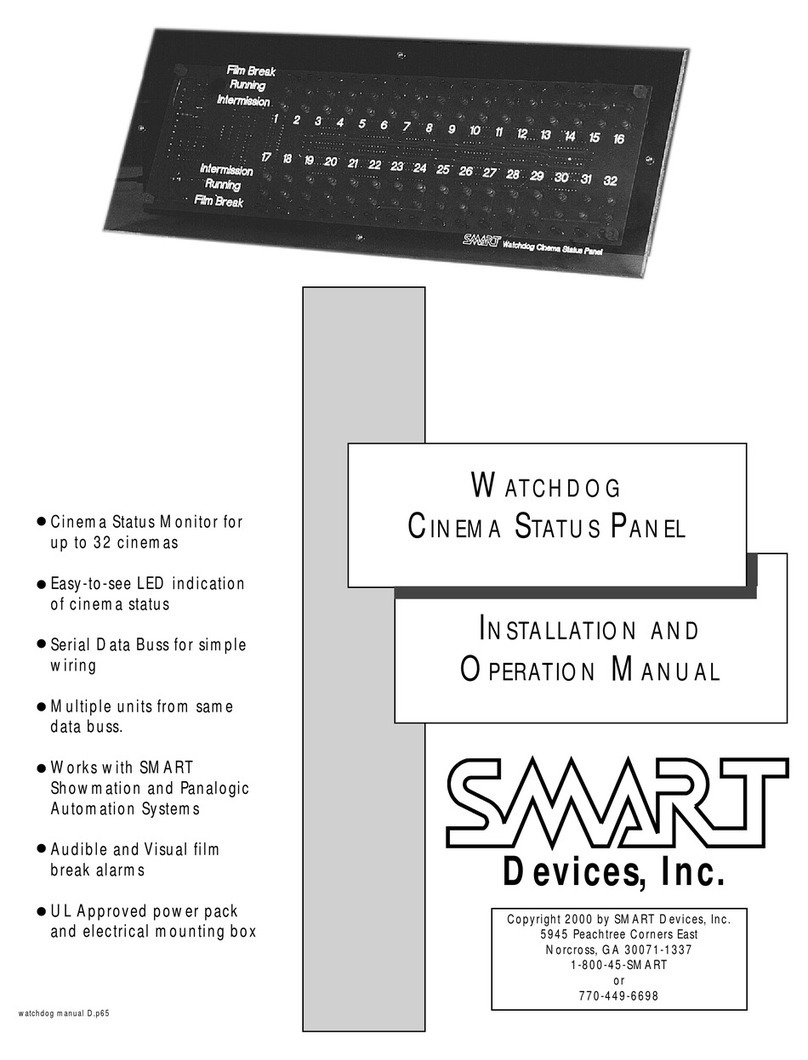
SMART
SMART Watchdog Installation and operation manual
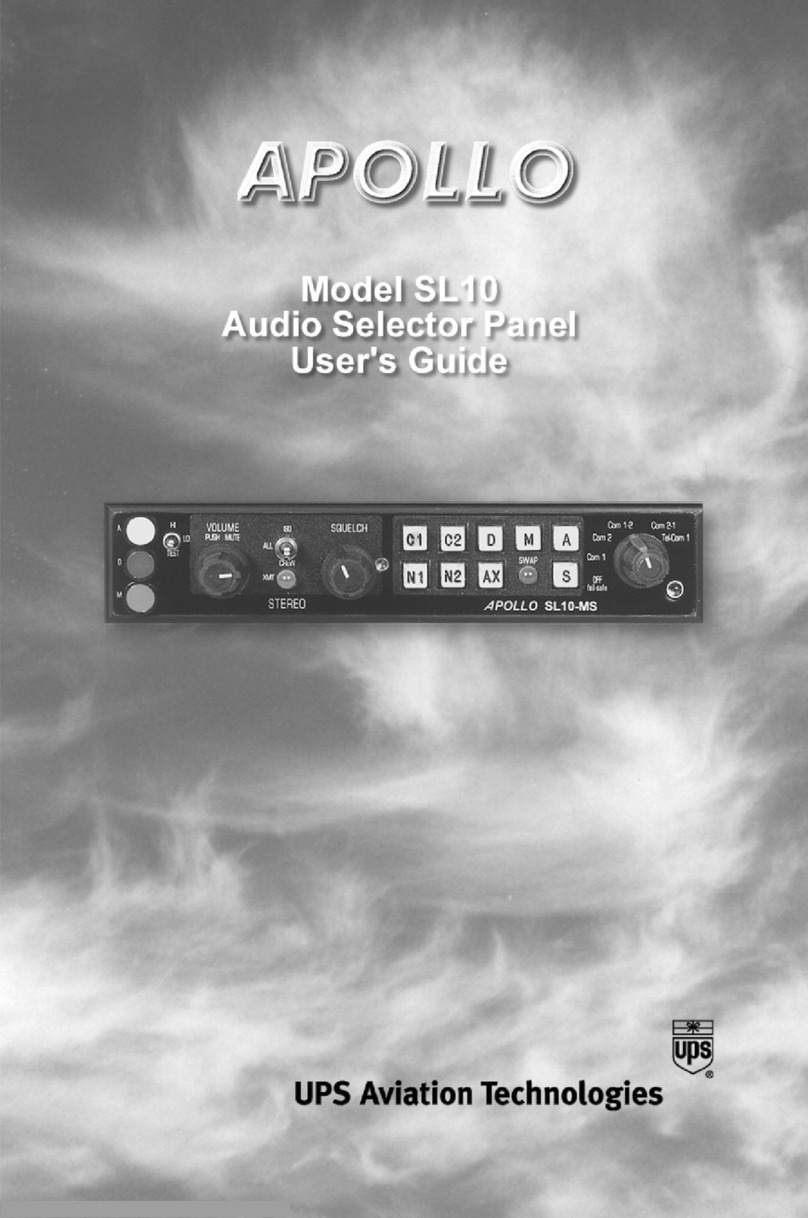
UPS Aviation Technologies
UPS Aviation Technologies 10 user guide

BLAUBERG Ventilatoren
BLAUBERG Ventilatoren S14 user manual
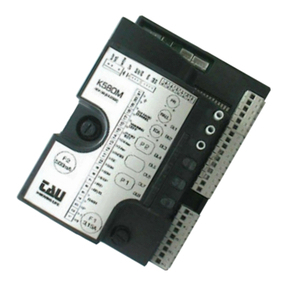
tau
tau K580M installation guide
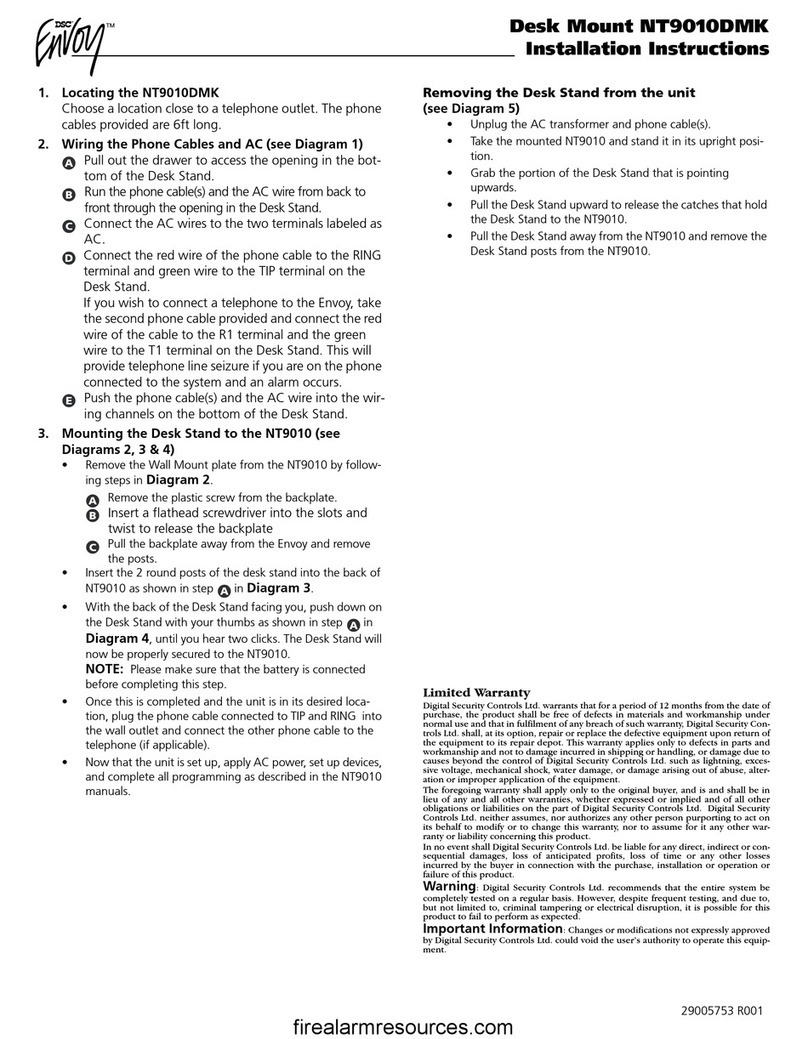
DSC
DSC Envoy NT9010DMK installation instructions
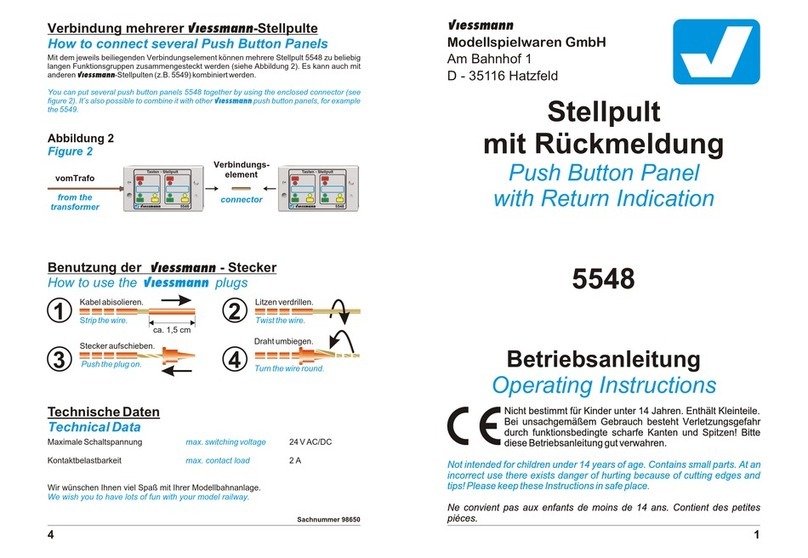
Viessmann
Viessmann 5548 operating instructions
